1. Burke L, Deakin V. Clinical Sports Nutrition. 5th ed. Sydney: McGraw-Hill;2015. p. 592–618.
2. Bar-Or O. Nutrition for child and adolescent athletes. Sports Sci Exch. 2000; 13:1–4.
3. Petrie HJ, Stover EA, Horswill CA. Nutritional concerns for the child and adolescent competitor. Nutrition. 2004; 20:620–631. PMID:
15212744.

4. Cotugna N, Vickery CE, McBee S. Sports nutrition for young athletes. J Sch Nurs. 2005; 21:323–328. PMID:
16419340.

5. Purcell LK. Canadian Paediatric Society, Paediatric Sports and Exercise Medicine Section. Sport nutrition for young athletes. Paediatr Child Health. 2013; 18:200–202. PMID:
24421690.

6. Son HS, Lee SJ. A study on the nutrient intakes of the taekwondo players before and after the games. J Taekwondo Sci. 2009; 2:43–49.
7. Hwang SH, Jung KA, Kim C, Ahn HC, Chang YK. The status of nutrient and food intakes and the nutritional knowledge in adolescent rhythmic gymnasts. Korean J Nutr. 2004; 37:479–492.
8. Cheong SH, Sung H, Kim SK, Kim K, Cho MH, Chang KJ. Eating behaviors, perception of body image, hematological indices and nutrient intake of adolescent female athletes in Incheon. Korean J Community Nutr. 2003; 8:951–963.
9. Jang HS, Lee SY. The body composition and the nutrient intakes of the physical-education high school male athletics and high school male students. J Korean Home Econ Educ Assoc. 2006; 18:207–216.
10. Galloway JC, Nigg CR, Liu M, Banna JC. Predictors of change in physical activity and fruit and vegetable intake in a multiethnic population in Hawaii at 6 and 12 months follow-up. Int J Appl Psychol. 2015; 5:45–53. PMID:
27525198.
11. Yusufov M, Paiva AL, Redding CA, Lipschitz JM, Gokbayrak NS, Greene G, Rossi JS, Blissmer B, Velicer WF, Prochaska JO. Fat reduction efforts: a 24-month longitudinal comparison of a large sample of maintainers, relapsers, and non-changers. Health Promot Pract. 2016; 17:116–126. PMID:
26452769.
12. Kim J, Kim YM, Jang HB, Lee HJ, Park SI, Park KH, Lim H. Evidence-based nutritional intervention protocol for Korean moderate-severe obese children and adolescents. Clin Nutr Res. 2019; 8:184–195. PMID:
31384597.

13. Chansukree P, Rungjindarat N. Social cognitive determinants of healthy eating behaviors in late adolescents: a gender perspective. J Nutr Educ Behav. 2017; 49:204–210. PMID:
28284358.
14. Prochaska JO, Redding CA, Evers KE. The transtheoretical model and stages of change. Glanz K, Rimer BK, Viswanath K, editors. Health Behavior: Theory, Research, and Practice. 5th ed. San Francisco: Jossey-Bass;2015. p. 125–148.
15. Kelder SH, Hoelscher D, Perry CL. How individuals, environments, and health behaviors interact. Glanz K, Rimer BK, Viswanath K, editors. Health Behavior: Theory, Research, and Practice. 5th ed. San Francisco: Jossey-Bass;2015. p. 159–182.
16. Lee JS, Cho SS, Kim KW. Weight control practices, beliefs, self-efficacy, and eating behaviors in college weight class athletes. Nutr Res Pract. 2020; 14:45–54. PMID:
32042373.

17. Hong H, Lee O, Jeong DC, So JM, Nagatomi R, Choi EC, Hwang GH, Ahn EH. A study of dietary intake and bone mineral density in competitive female athletes. Korean J Nutr. 2001; 34:645–655.
18. Kim HY, Choi JY, Ryoo BK. Dietary intake and iron and lipid nutrition status of female taekwondo athletes. Korean J Exerc Nutr. 2005; 9:213–219.
19. Jang JH. Analysis in nutritional intake and blood iron status by exercise type in female college athletics. Korean J Sports Sci. 2014; 23:1007–1015.
20. Lee JS, Kim MH, Bae YJ, Choe YH, Sung CJ. A study of dietary habits, nutrition intake status and serum copper and zinc concentrations of adolescent athletes. Korean J Nutr. 2005; 38:465–474.
21. Lee JS, Kim NY, Lee YH. A study on dietary behaviors, nutrients intake status and hematological status of middle school football players in Busan. Korean J Community Nutr. 2008; 13:601–609.
23. Ko SY, Kim KW. Nutrition label use, self-efficacy, snacking and eating behavior of middle school students in Kyunggi area. Korean J Community Nutr. 2010; 15:513–524.
24. Choi JY, Choi MJ. The vegetable intake and preference in middle school students in Daegu. J Living Sci Res. 2016; 42:21–33.
25. Na SY, Ko SY, Eom SH, Kim KW. Intakes and beliefs of vegetables and fruits, self-efficacy, nutrition knowledge, eating behavior of elementary school students in Kyunggi area. Korean J Community Nutr. 2010; 15:329–341.
26. Lim HK. Nutritional state and dietary behaviors of basketball athletes in girls high-school [master's thesis]. Yongin: Yongin University;2008.
27. Cheong HS, Choi AK. A study on the dietary status of the elementary school students in Ulsan. J Basic Sci. 2011; 28:5–21.
28. Sung HI, Chang KJ. A Survey on self-reported health and eating habit of elite female adolescent athletes in Incheon by sport type. J Korean Soc Food Sci Nutr. 2005; 34:366–373.
29. Cho SS. Optimal nutrition for sports and exercise. Korean J Community Nutr. 2002; 7:410–420.
30. Ahn Y, Kim KW. Beliefs regarding vegetable consumption, self-efficacy and eating behaviors according to the stages of change in vegetable consumption among college students. Korean J Community Nutr. 2012; 17:1–13.

31. Choi MY, Kim HY. Nutrition knowledge, dietary self-efficacy and eating habits according to student's stage of regular breakfast or exercise. Korean J Community Nutr. 2008; 13:653–662.
32. Hwang HH, Shin EK, Lee HJ, Hwang TY, Kim YA, Lee YK. Comparison of salty taste assessment, high-salt dietary attitude and high-salt dietary behavior by stage of behavior change among students in Daegu. J Nutr Health. 2016; 49:36–42.

33. Suh YS, Chung YJ. Comparison of mineral and vitamin intakes according to the stage of change in fruit and vegetable intake for elementary school students in Chungnam province. Korean J Nutr. 2008; 41:658–666.
34. Gacek M. Association between self-efficacy and dietary behaviours of American football players in the Polish clubs in the light of dietary recommendations for athletes. Rocz Panstw Zakl Hig. 2015; 66:361–366. PMID:
26656418.
35. Abood DA, Black DR, Birnbaum RD. Nutrition education intervention for college female athletes. J Nutr Educ Behav. 2004; 36:135–139. PMID:
15202989.

36. Sundgot-Borgen J. Eating disorders, energy intake, training volume, and menstrual function in high-level modern rhythmic gymnasts. Int J Sport Nutr. 1996; 6:100–109. PMID:
8744783.

37. Rosenbloom CA, Jonnalagadda SS, Skinner R. Nutrition knowledge of collegiate athletes in a Division I national collegiate athletic association institution. J Am Diet Assoc. 2002; 102:418–420. PMID:
11902379.

38. McDowall JA. Supplement use by young athletes. J Sports Sci Med. 2007; 6:337–342. PMID:
24149420.
39. Kim YS, Choi HM, Kim HY. A study on nutrient intake status and dietary behavior of elite athletes. Korean J Exerc Nutr. 2006; 10:305–313.
40. Lee YS. A research on the actual condition of nutritional status, eating habit, food and food preference of woman athletes in Korean national team. J Coaching Dev. 2005; 7:233–242.
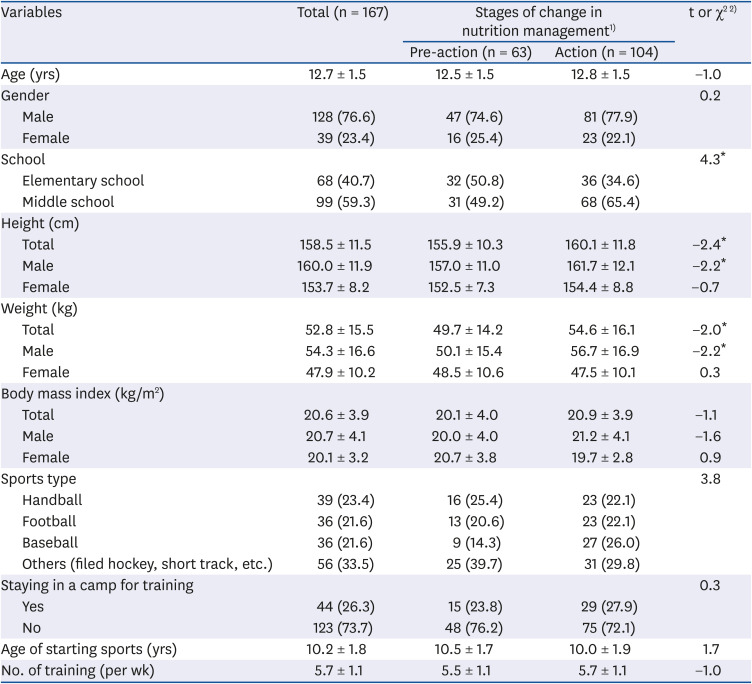
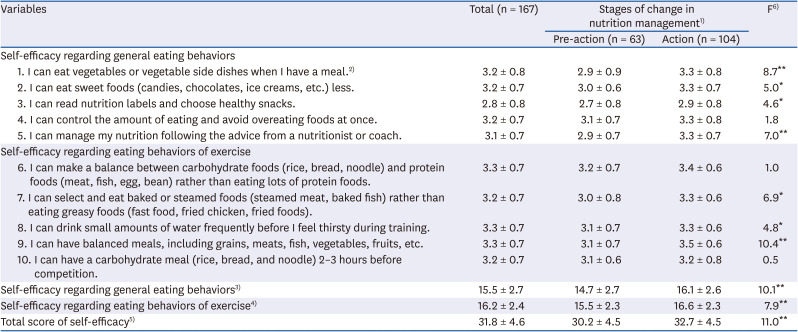
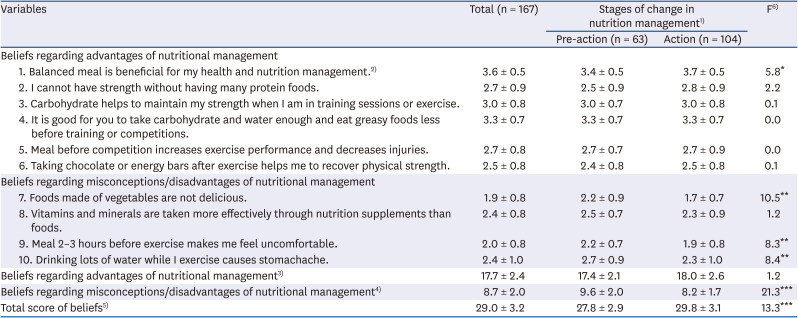
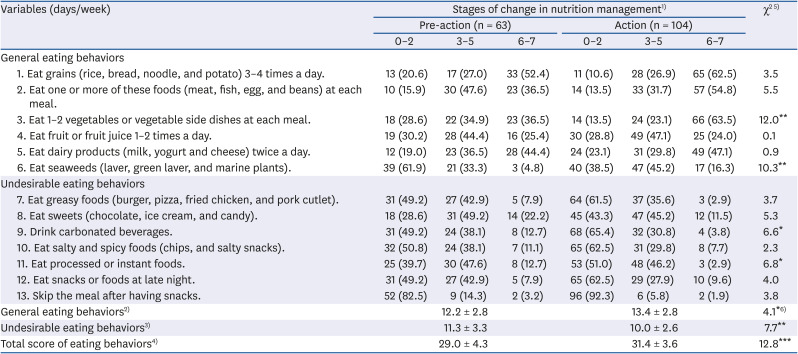
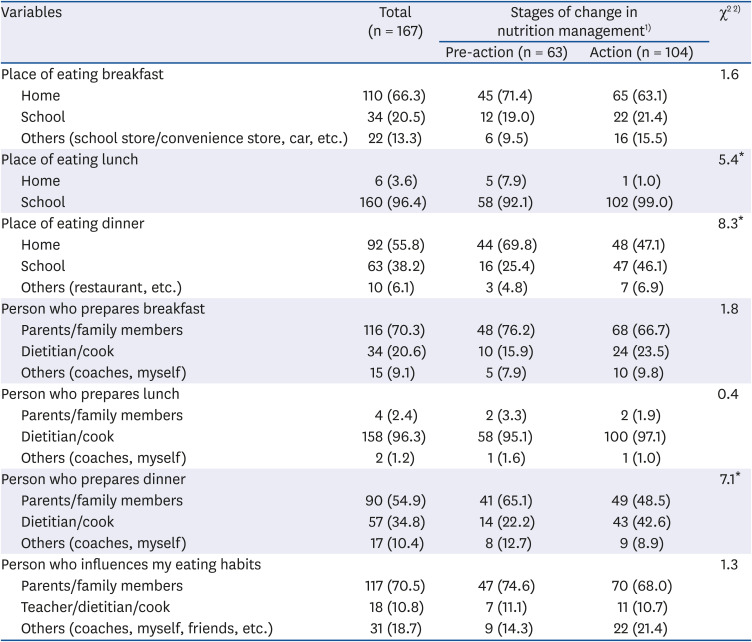
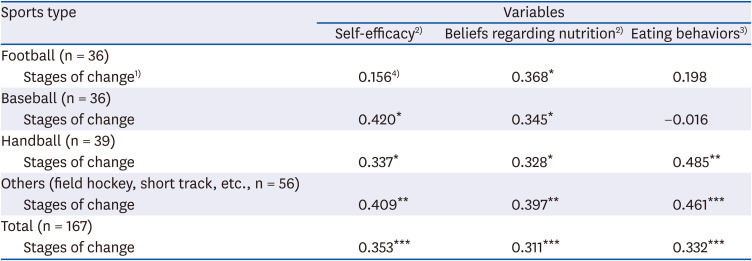





 PDF
PDF Citation
Citation Print
Print



 XML Download
XML Download